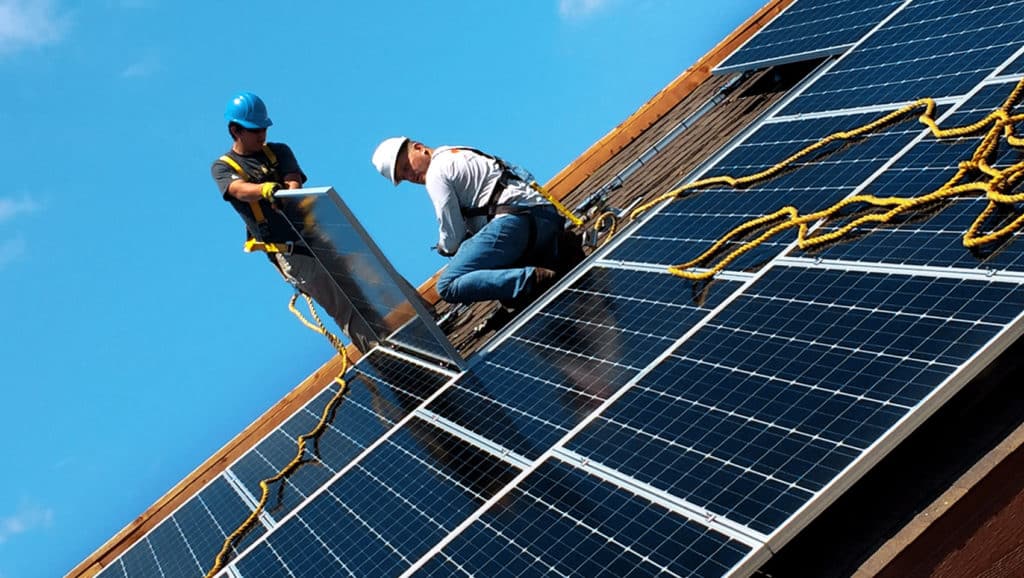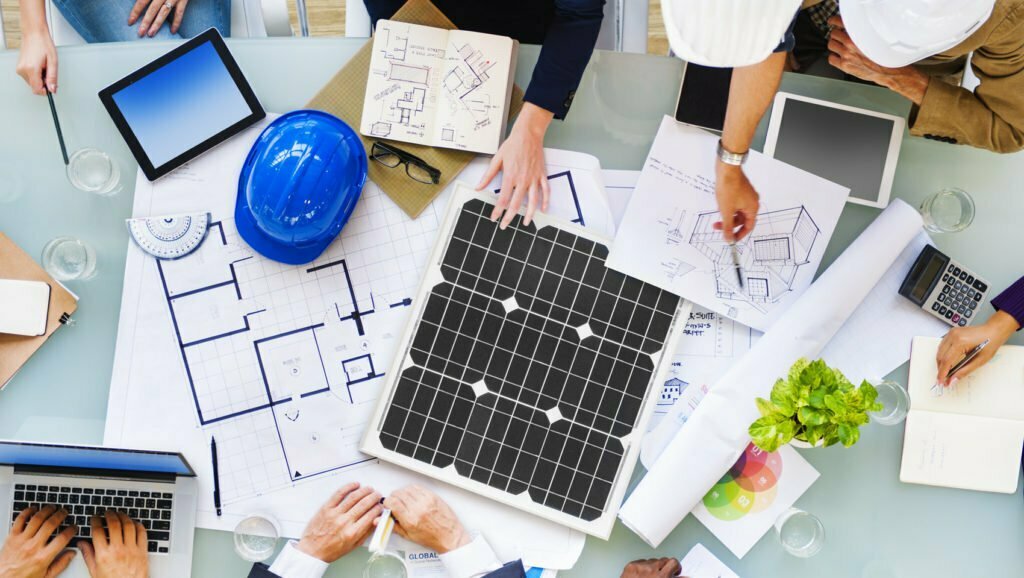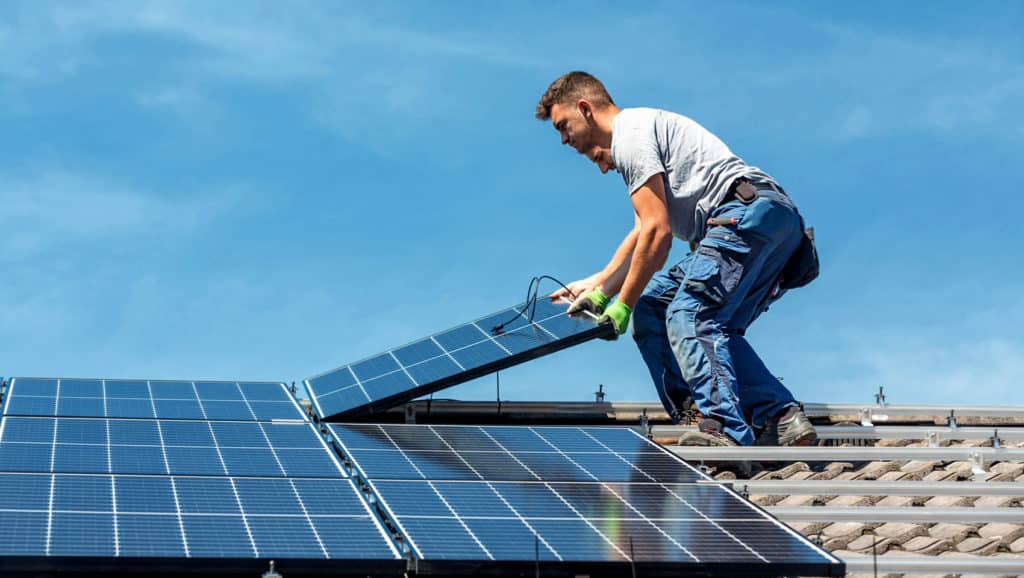Any house renovation or upgrade is a bit stressful for the owner because it assumes a chain of inevitable inconveniences and strained occasions. It is only due to the upcoming positive changes that you overcome the stress and discomfort, which lasts conditioned by the type of changes you plan to make. The solar energy installation process is one of the least stressful ones, even if you decide to do it yourself. Although it may seem complicated at first sight, this activity does not always require professionals to be involved. Let me take you on a brief tour through the whole process.
Your First Steps
Once you have decided to switch to solar energy consumption, you need to choose a solar system installation company that will best suit your requirements. I suggest that you do thorough research, highlight, and make a survey of at least three companies and choose one of them that will meet all your expectations. Since installing solar panels is a comparably costly innovation, you should clearly distinguish what your system must perform. As modern markets offer various choices in this field, it may often be confusing which type of photovoltaic panels to choose or what monitoring system will best suit your house.
When you make a company’s final choice, you should go through a documentation process and sign a contract. Here it’s worth mentioning that it can be a lease, loan, or cash purchase: depending on the solar company you choose, it will suggest its financial options for you to consider. The next step is the engineer’s visit, who will evaluate your house’s electrical status and make sure that it complies with all the necessary criteria for photovoltaic system installation. As roof reliability is one of the core elements for solar panel installation homes, the company specialist will check its solidity first. The existing electrical panel may need to be upgraded since the new system may require more current amps than your present electrical panel has the capacity of.
Paperwork Is Inevitable
Like in all other cases here, too, you will need to deal with a mass of paperwork and bureaucracy. Thus, for instance, you must apply for federal and state solar incentives, clean energy financing initiatives like PACE, government rebates and SREC (solar renewable energy certificates). You will also need to apply for special permits depending on the area you live in. For example, there are U.S states that demand three feet of free space to be left on the house rooftop, unlike the others that require none of the kind. There is no need to worry, though, since your installer is sure to have the necessary information about the regional restrictions and incentives and spare your unpleasant paperwork. This procedure will require a specific time interval based on the area you live in (typically from one to two months).
Purchase The Right Equipment For Your Future System And Go Solar!
Now that all the hustle and bustle of documentation is over, you are there to choose the main solar elements required for your system installation. The primary components of the PV system are solar panels and inverters. Your consultant will surely suggest one or two preferable brands that the company officially distributes. It is here that your previous research will come to help. The type of solar panel and the structure of the solar inverter (whether to choose string inverter, micro-inverters, or power optimizers) must be selected based on efficiency, durability, and budget as well. Not to forget about various wires, one or two batteries of your choice, mounting structures and energy monitoring systems. When your order arrives at the company warehouse, the specialist will come to your place and start the main solar panel installation process, which generally takes from two to three days based on the system size. First, they will set up the mounting system; then, the solar panels will be attached to them, the latter will be connected to the type of inverter you have already chosen with wiring and connect to the local power grid. Before getting approval for connecting your solar panels to the electric grid, you will be visited by a regional government representative who will perform a thorough investigation of the PV system. Following this inspection, the electric company representative will also come and evaluate before giving final permission to switch the system on.
DIY
As I already mentioned above, it is quite possible to DIY your photovoltaic system with initial research and a good solar panel installation guide. Now that you know the main components required let’s study a few essential tips you will need to know before getting started. Security is primary: that’s why I highly recommend switching off all the house electricity before working with the wiring. Since chances to fall off the roof are high, you should put on some rubber boots or arrange scaffolding by all means. Now that the security issue is solved, take a look at the instructions you should keep in mind.
- The direction your panels must face depends on your house location. For the Northern hemisphere, solar panels must face the South, and for the Southern hemisphere, they must face the North direction.
- Your solar panels must be installed at the right angle to maximize sunlight absorption, depending on the latitude of your location. That is approximately 18°-36° degrees.
- The distance between the two pedestals must be 1000mm. The minimum size of the P.C.C foundation must be 300×300×300mm with the ratio of 1:2:4 for Cement (14%): Sand (28%): Aggregate (57%).
- To make a series connection of, for instance, a 1kW solar panel array, you must connect four panels of 254W/24V. This type of connection will add voltage. To make a parallel connection, all negative terminals must be connected, and all positive terminals as well.
- To determine how many solar panels and how much space you need for your house loads, keep in mind that a 1kW panel requires 12 square meters or 108 square feet of shadow-free space.
Now that you know the basics of solar system installation you are ready to make a final decision, to install or not to install.
Author of a publication: Helen Kocharyan




